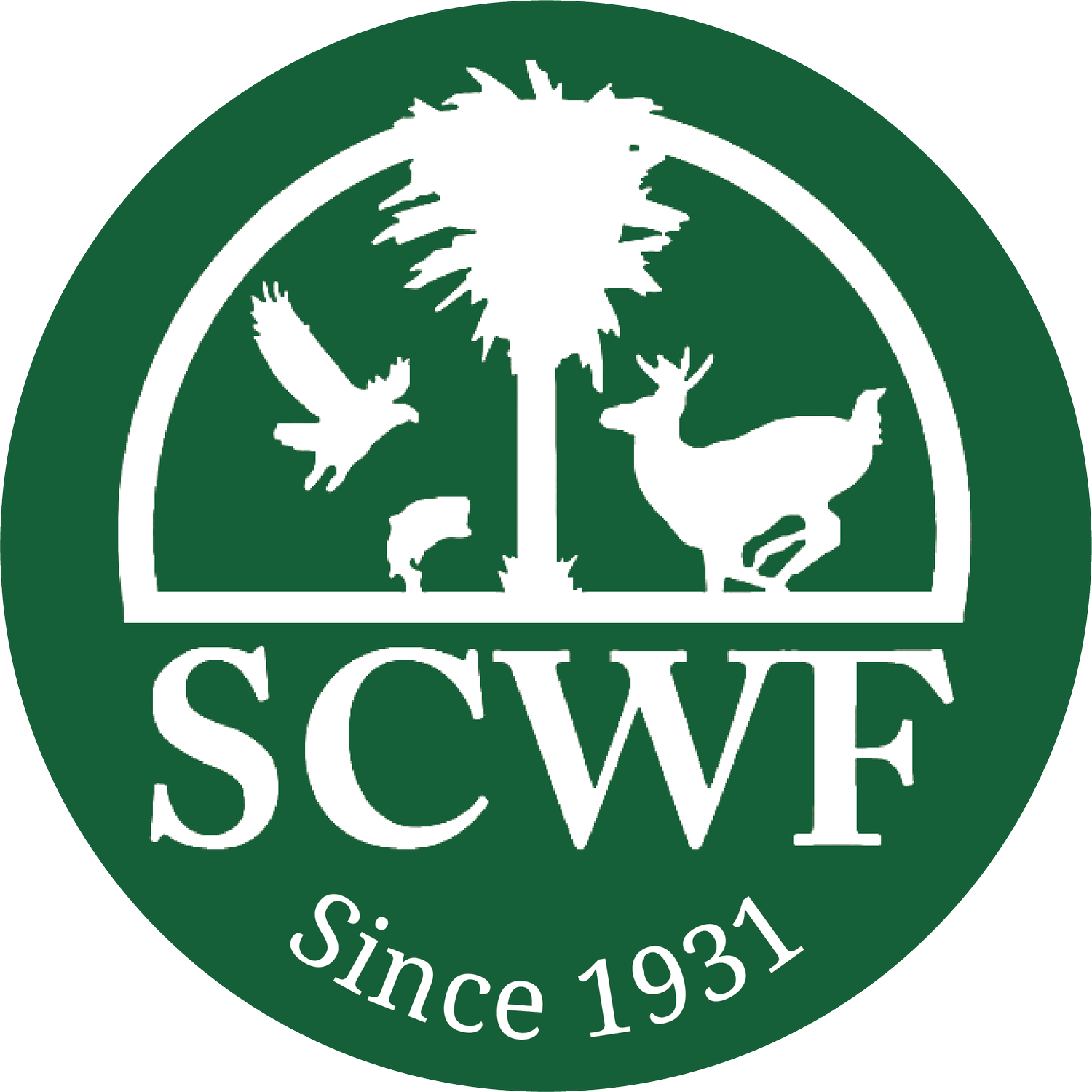Male bluebird bringing a snack back to the nest, photo by Natalie Chapman.
A flash of color across the yard, the chorus of birdsong in the morning, the delight of children chasing a toad. Feelings of hope finding new flower buds, joy as baby birds leave the nest: There are many reasons to plant a garden for wildlife in your yard and throughout your community.
South Carolina is blessed with an incredible variety of resources that are beautiful and accessible. There are many habitat types, from mountain streams to rolling piedmont, sandhills with longleaf pine and coastal plain with bottomland hardwood forest, salt marshes and beaches. These diverse habitats provide for an astonishing array of wildlife.
Our wildlife, the native plants that wildlife depends on, and the beautiful places we cherish for vacations, outdoor recreation, and solace - all of this is in jeopardy. It's threatened by new housing developments, invasive species, pollution, increased storms, flooding issues, and so much more, right here in our state.
It’s overwhelming to think about all of these threats. As we enjoy breathtaking scenery and amazing wildlife around us, the world is facing serious issues like pollution, climate change, and overharvesting.
We’re hooked, we want to help, but we don’t know where to start. There is good news: You don’t have to save the world all at once. Small steps can have a big impact.
One step is right outside your door. You can create a Backyard Wildlife Habitat - even a small yard can be certified by the National Wildlife Federation if you provide food, water, cover, and places to raise young. This makes a big difference for wildlife and gives you the opportunity to educate your neighbors and spread the word throughout your community. Habitat gardens also can be created at parks, libraries, churches, schools, and businesses.
To begin, food can be offered with different types of backyard feeders– hopper-style seed feeders, hanging suet cages, hummingbird nectar feeders, mealworm cups for bluebirds, and more. Native plants such as American beautyberry, asters, bee balm, coreopsis, goldenrod, and oakleaf hydrangea provide food in the form of nectar, fruits, and seeds.
Painted lady butterfly on native verbena, photo by Joe Gilfus.
Butterflies are looking for native plants that provide nectar, and also “host plants” where they can lay their eggs, and then for caterpillars to feed on. Each species of butterfly has specific plants that are the preferred food sources for its caterpillars. Monarchs, for example, lay their eggs only on milkweed plants, and the caterpillars will chew through the milkweed before forming a chrysalis for the miraculous change to a butterfly.
Wildlife can find water in birdbaths, shallow dishes, and fountains. Offering several different types of water sources throughout your yard, at varying heights and with various amounts of cover nearby, will encourage a greater diversity of wildlife in your yard.
Evergreen shrubs and trees provide great sources of cover and nesting sites. You can also add a nesting box for birds; mounting it on a metal pole with a squirrel baffle, away from shrubs and trees, will keep the nest safer from predators.
While providing these habitat elements, it is also important to consider using sustainable gardening practices in your yard. Limiting chemical fertilizers and avoiding pesticides and herbicides is important to provide a healthy environment. You can cut down on water use by selecting native plants, mulching flower beds, and using drip/soaker hoses instead of sprinklers.
Once you have these main ingredients for habitat – food, water, cover, and places to raise young, and are taking steps to garden sustainably, you can apply to be a Certified Wildlife Habitat through the National Wildlife Federation.
Aerin Brownlee checks on the pollinator plants at Conestee Park Community Garden.
Going a step further, tell your neighbors, and spread the word throughout your community. Your entire town could be a certified Community Wildlife Habitat! Greer and Paris Mountain were both certified in 2021 by educating residents about gardening for wildlife and taking additional steps to enhance habitat in common areas, parks, and schools.
Working together and taking some of these little steps creates a network of habitats and increases the impact on wildlife. You can find out more about habitat gardening, including lists of native plants valuable to wildlife, on the South Carolina Wildlife Federation’s website: https://www.scwf.org/habitats
Sara Green is the executive director of the South Carolina Wildlife Federation.
Article published in Spartanburg Herald-Journal on 04/26/2022.



